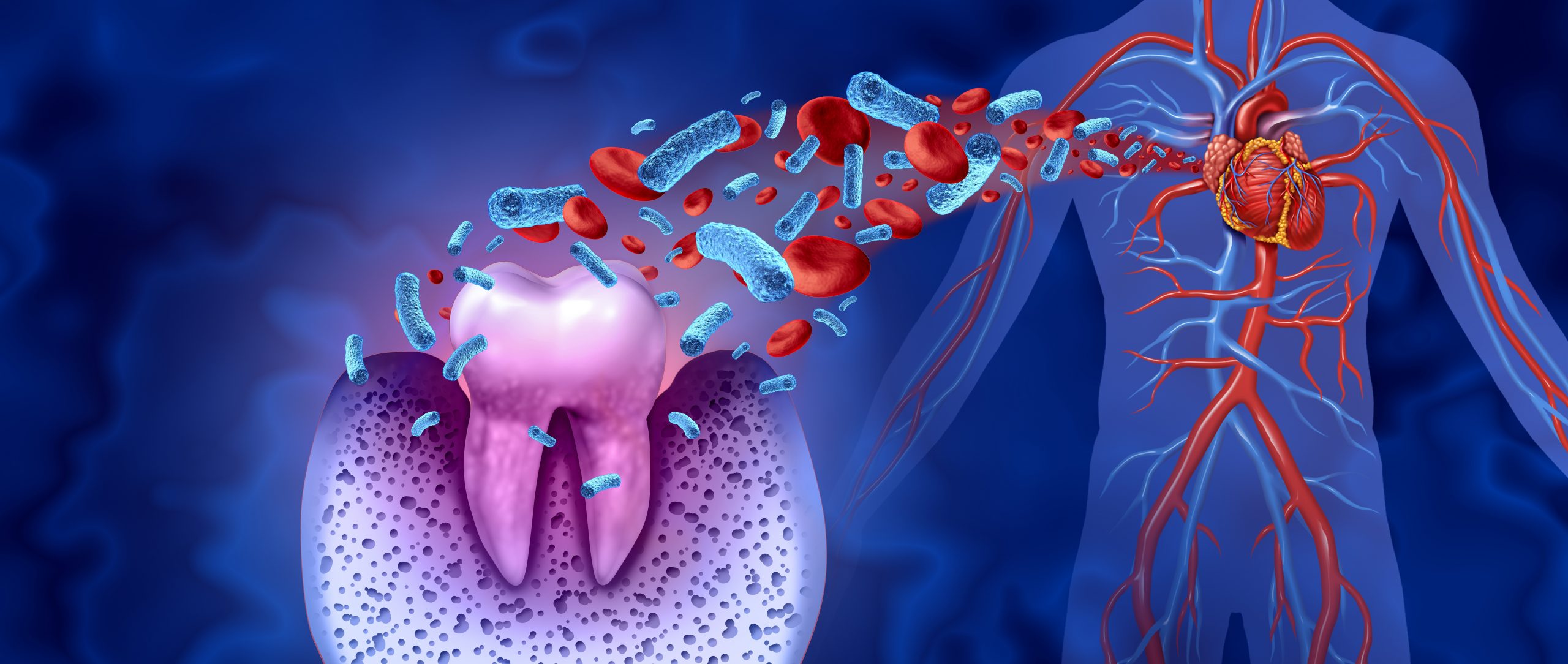Information Library
Start Reading

Even if you’re not eating candy hearts this Valentine’s Day, February is a good month for a conversation about healthy hearts.
 February is American Heart Month—a time for raising awareness of and taking steps to fight cardiovascular disease (diseases affecting the heart or blood vessels).
February is American Heart Month—a time for raising awareness of and taking steps to fight cardiovascular disease (diseases affecting the heart or blood vessels).
Heart disease is the leading cause of death for people of most racial and ethnic groups in the United States. And while many Americans know about several risk factors, the potential link between oral health and heart disease isn’t as widely known.
Your mouth and your heart might seem unrelated. “How could I get a heart infection from my teeth?” you might ask. Most heart disease-prevention efforts focus on increasing physical activity, bringing down high blood pressure, monitoring cholesterol and blood sugar, managing stress, and other important actions.
But even if you’re “doing everything right,” you could be at risk for heart attacks and other cardiovascular events.
Could periodontal disease (gum disease) pose a risk for heart disease?
Research shows “[g]um disease is associated with an increased risk of cardiovascular disease: the more severe the periodontitis, the higher the risk.”
 Your mouth is a door to your entire body, and your oral health makes an impact on your overall health. Bacteria spread through your bloodstream from the mouth to other bodily areas. These microorganisms are the link between gum disease and specific heart conditions, such as endocarditis, but could potentially also pose a risk to other heart conditions.
Your mouth is a door to your entire body, and your oral health makes an impact on your overall health. Bacteria spread through your bloodstream from the mouth to other bodily areas. These microorganisms are the link between gum disease and specific heart conditions, such as endocarditis, but could potentially also pose a risk to other heart conditions.
When bacteria reach the heart, they can attach themselves to it and possibly cause inflammation. This inflammation could then result in such conditions as endocarditis (an infection of the heart’s inner lining), atherosclerosis (clogged arteries), and stroke.
As bacteria move through your bloodstream, they cause an elevated C-reactive protein, which is a marker for inflammation in the blood vessels. Vasculitis (blood vessel inflammation) thickens the blood vessels’ walls, which may restrict blood flow and lead to organ and tissue damage. It is another way oral bacteria could possibly increase your risk of heart disease and stroke.
Importantly, although there exists indirect evidence for a causal link between periodontal disease and heart disease, this has never been proven. For example, there are no studies that show that successful treatment of periodontal disease will reduce the risk for future heart disease.
More Americans need to know about the bacterial connection between the health of their gums and teeth and heart health.
 Nearly half (47.2%) of Americans age 30 and older live with some form of periodontal disease. And much gum disease likely goes undiagnosed. After all, a patient’s teeth can feel fine, and general medical practitioners don’t usually examine the mouth during visits.
Nearly half (47.2%) of Americans age 30 and older live with some form of periodontal disease. And much gum disease likely goes undiagnosed. After all, a patient’s teeth can feel fine, and general medical practitioners don’t usually examine the mouth during visits.
You may have gum disease, even in a mild form, if you’re experiencing one or more of these symptoms:
The relationship between oral health and heart disease means you must take these symptoms seriously and get them treated as soon as possible.
Periodontal disease is the primary cause of tooth loss—and as you now know, it’s also linked to heart disease and stroke. If you experience its symptoms, take these actions to treat it:
If symptoms persist, it’s likely infection has taken root in your mouth’s hardest-to-reach places. Your periodontist—a specialist in preventing, diagnosing, and treating gum disease—may need to prescribe an antibiotic to return your mouth to good health.
The periodontists at Penn Dental Medicine (PDM) are eager to have a conversation with you about your oral health and heart disease. They can help you achieve and maintain healthy gums and teeth. You can schedule an appointment online or call us at 215-898-8965.
To find out more about how our periodontists can help you—in American Heart Month and all year long—download our free eBook, Periodontics Treatment: Do You Really Need It? Understanding Patient Mouth & Gum Health.
The brief eBook further explains how your gums’ well-being relates to your overall well-being, the risk factors for gum disease, and how periodontists can get and keep your gums and mouth in the best possible health.